
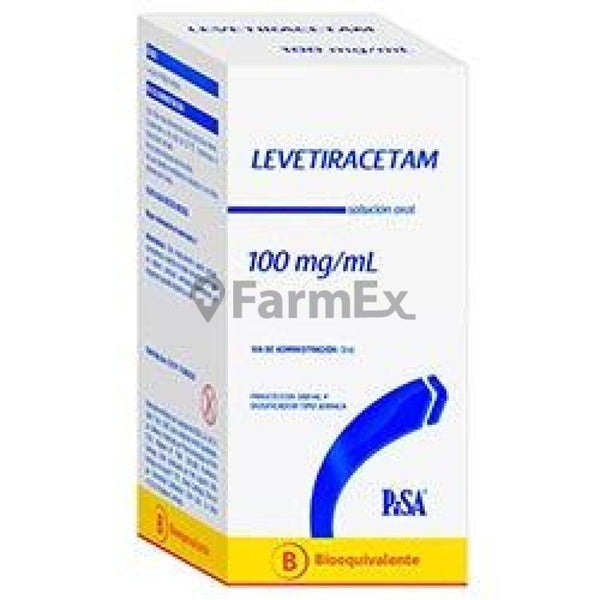
ЛЕВЕТИРАЦЕТАМ ТАРБИС 100 мг/мл ОРАЛЬНЫЙ РАСТВОР

Спросите врача о рецепте на ЛЕВЕТИРАЦЕТАМ ТАРБИС 100 мг/мл ОРАЛЬНЫЙ РАСТВОР

Инструкция по применению ЛЕВЕТИРАЦЕТАМ ТАРБИС 100 мг/мл ОРАЛЬНЫЙ РАСТВОР
Введение
Проспект:информация для пользователя
Леветирацетам Тарбис 100 мг/мл пероральная растворение EFG
Леветирацетам
Прочитайте внимательно весь проспект перед началом приема этого лекарства, поскольку он содержит важную информацию для вас.
- Сохраните этот проспект, поскольку вам может потребоваться перечитать его.
- Если у вас есть какие-либо вопросы, проконсультируйтесь с вашим врачом или фармацевтом.
- Это лекарство было назначено только вам, и не следует давать его другим людям, даже если у них такие же симптомы, как у вас, поскольку оно может нанести им вред.
- Если вы испытываете побочные эффекты, проконсультируйтесь с вашим врачом или фармацевтом, даже если это побочные эффекты, которые не указаны в этом проспекте.
Содержание проспекта:
- Что такое Леветирацетам Тарбис и для чего он используется
- Что нужно знать перед началом приема Леветирацетама Тарбис
- Как принимать Леветирацетам Тарбис
- Возможные побочные эффекты
- Хранение Леветирацетама Тарбис
- Содержание упаковки и дополнительная информация
1. Что такое Леветирацетам Тарбис и для чего он используется
Леветирацетам Тарбис 100 мг/мл пероральная растворение - это противоэпилептическое лекарство (лекарство для лечения приступов эпилепсии).
Леветирацетам Тарбис используется:
- в качестве монотерапии (без необходимости другого противоэпилептического лекарства) у взрослых и подростков старше 16 лет с недавно диагностированной эпилепсией для лечения приступов с парциальным началом с или без вторичной генерализации.
- в комбинации с другими противоэпилептическими лекарствами для лечения:
- приступов с парциальным началом с или без генерализации у взрослых, подростков, детей и младенцев старше 1 месяца.
- миоклонических приступов у взрослых и подростков старше 12 лет с ювенильной миоклонической эпилепсией.
- тонико-клонических генерализованных приступов у взрослых и подростков старше 12 лет с идиопатической генерализованной эпилепсией.
2. Что нужно знать перед началом приема Леветирацетама Тарбис
Не принимайте Леветирацетам Тарбис
- Если вы аллергичны (гиперчувствительны) к леветирацетаму или любому другому компоненту этого лекарства (указанному в разделе 6).
Предостережения и меры предосторожности
Проконсультируйтесь с вашим врачом или фармацевтом перед началом приема Леветирацетама Тарбис.
- Если у вас есть проблемы с почками, следуйте инструкциям вашего врача, который решит, нужно ли вам корректировать дозу.
- Если вы заметите любое снижение роста вашего ребенка или неожиданное развитие полового созревания, свяжитесь с вашим врачом.
- Если вы заметите увеличение тяжести приступов (например, увеличение их частоты), свяжитесь с вашим врачом.
- Небольшое количество людей, получающих лечение противоэпилептическими лекарствами, такими как леветирацетам, имели мысли о причинении вреда себе или суициде. Если у вас есть какие-либо симптомы депрессии и/или мысли о суициде, свяжитесь с вашим врачом.
Прием Леветирацетама Тарбис с другими лекарствами
Сообщите вашему врачу или фармацевту, если вы принимаете, недавно принимали или можете принимать любое другое лекарство, включая те, которые можно купить без рецепта.
Прием Леветирацетама Тарбис с пищей, напитками и алкоголем
Вы можете принимать Леветирацетам Тарбис с или без пищи. Как меру безопасности не принимайте Леветирацетам Тарбис с алкоголем.
Беременность и лактация
Если вы беременны или кормите грудью, считаете, что можете быть беременной или планируете стать беременной, проконсультируйтесь с вашим врачом или фармацевтом перед использованием этого лекарства.
Леветирацетам Тарбис не должен использоваться во время беременности, если это не абсолютно необходимо. Неизвестен возможный риск для ребенка во время беременности. В исследованиях на животных леветирацетам показал нежелательные эффекты на репродукцию при дозах, превышающих те, которые вам могут потребоваться для контроля приступов. Не рекомендуется грудное вскармливание во время лечения.
Вождение и использование машин
Леветирацетам Тарбис может повлиять на вашу способность управлять транспортными средствами или работать с инструментами или машинами, поскольку он может вызывать сонливость. Это более вероятно в начале лечения или при увеличении дозы. Не следует управлять транспортными средствами или работать с машинами до тех пор, пока не будет подтверждено, что ваша способность выполнять эти действия не нарушена.
Леветирацетам Тарбис содержитметилпара-гидроксибензоат (E218), пропилпара-гидроксибензоат и мальтитол.
Может вызывать аллергические реакции (возможно, задержанные) из-за содержания метилпара-гидроксибензоата (E218) и пропилпара-гидроксибензоата (E216).
Это лекарство содержит мальтитол. Если ваш врач указал, что у вас есть непереносимость некоторых сахаров, проконсультируйтесь с ним перед приемом этого лекарства.
3. Как принимать Леветирацетам Тарбис
Следуйте точно инструкциям по приему Леветирацетама Тарбис, указанным вашим врачом. В случае сомнений проконсультируйтесь с вашим врачом или фармацевтом.
Рекомендуемая доза Леветирацетама Тарбис - дважды в день, один раз утром и один раз вечером, примерно в одно и то же время каждый день.
Принимайте пероральную растворение в соответствии с инструкциями вашего врача.
Монотерапия
Доза для взрослых и подростков (старше 16 лет):
Измерьте подходящую дозу с помощью шприца на 10 мл, включенного в упаковку для пациентов старше 4 лет.
Общая доза: Леветирацетам Тарбис принимается дважды в день, разделенный на две равные дозы, каждая из 5 мл (500 мг) до 15 мл (1500 мг).
Когда вы начинаете принимать Леветирацетам Тарбис, ваш врач назначит вам нижнюю дозув течение двух недель перед назначением общей минимальной дозы.
Комбинированная терапия
Доза для взрослых и подростков (от 12 до 17 лет) с весом 50 кг и более:
Измерьте подходящую дозу с помощью шприца на 10 мл, включенного в упаковку для пациентов старше 4 лет.
Общая доза: Леветирацетам Тарбис принимается дважды в день, разделенный на две равные дозы, каждая из 5 мл (500 мг) до 15 мл (1500 мг).
Доза для детей старше 6 месяцев:
Ваш врач назначит наиболее подходящую лекарственную форму Леветирацетама Тарбис в зависимости от возраста, веса и дозы.
Для детей от 6 месяцев до 4 лет измерьте подходящую дозу с помощью шприца на 3 мл, включенного в упаковку.
Для детей старше 4 лет измерьте подходящую дозу с помощью шприца на 10 мл, включенного в упаковку.
Общая доза: Леветирацетам Тарбис принимается дважды в день, разделенный на две равные дозы, каждая из 0,1 мл (10 мг) до 0,3 мл (30 мг) на килограмм веса ребенка (см. примеры доз в таблице ниже).
Доза для детей старше 6 месяцев:
Вес | Начальная доза: 0,1 мл/кг дважды в день | Максимальная доза: 0,3 мл/кг дважды в день |
6 кг | 0,6 мл дважды в день | 1,8 мл дважды в день |
8 кг | 0,8 мл дважды в день | 2,4 мл дважды в день |
10 кг | 1 мл дважды в день | 3 мл дважды в день |
15 кг | 1,5 мл дважды в день | 4,5 мл дважды в день |
20 кг | 2 мл дважды в день | 6 мл дважды в день |
25 кг | 2,5 мл дважды в день | 7,5 мл дважды в день |
50 кг и более | 5 мл дважды в день | 15 мл дважды в день |
Дозирование для младенцев (от 1 месяца до 6 месяцев):
Для младенцев от 1 месяца до 6 месяцев, измерьте подходящую дозу с помощью шприца на 1 мл, включенного в упаковку.
Общая доза: Леветирацетам Тарбис принимается дважды в день, разделенный на две равные дозы, каждая из 0,07 мл (7 мг) до 0,21 мл (21 мг) на килограмм веса младенца (см. примеры доз в таблице ниже).
Дозирование для младенцев (от 1 месяца до 6 месяцев):
Вес | Начальная доза: 0,07 мл/кг дважды в день | Максимальная доза: 0,21 мл/кг дважды в день |
4 кг | 0,3 мл дважды в день | 0,85 мл дважды в день |
5 кг | 0,35 мл дважды в день | 1,05 мл дважды в день |
6 кг | 0,45 мл дважды в день | 1,25 мл дважды в день |
7 кг | 0,5 мл дважды в день | 1,5 мл дважды в день |
Форма введения:
После измерения правильной дозы с помощью подходящего шприца Леветирацетам Тарбис можно принимать, разбавляя пероральную растворение в стакане воды или в бутылке.
Инструкции для правильного введения:
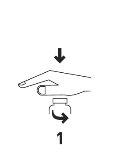
- Открыть флакон: нажать на крышку и повернуть против часовой стрелки (рисунок 1).
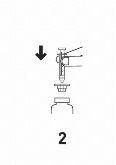 Вставить адаптер шприца в горлышко флакона (рисунок 2). Убедитесь, что он хорошо закреплен.
Вставить адаптер шприца в горлышко флакона (рисунок 2). Убедитесь, что он хорошо закреплен.- Взять шприц и вставить его в отверстие адаптера (рисунок 2).
- Положить флакон вниз (рисунок 3).
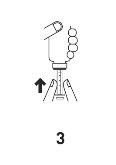
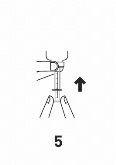

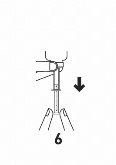 Наполнить шприц небольшим количеством растворения, опустив поршень (рисунок 4), а затем поднимая его, чтобы удалить любые возможные пузырьки (рисунок 5), и, наконец, опустив поршень до отметки graduations, соответствующей назначенной вашему врачу дозе в миллилитрах (мл) (рисунок 6).
Наполнить шприц небольшим количеством растворения, опустив поршень (рисунок 4), а затем поднимая его, чтобы удалить любые возможные пузырьки (рисунок 5), и, наконец, опустив поршень до отметки graduations, соответствующей назначенной вашему врачу дозе в миллилитрах (мл) (рисунок 6).
- Положить флакон вверх.
- Удалить шприц из адаптера.
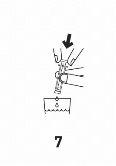 Выпустить содержимое шприца в стакан воды или в бутылку, опустив поршень до конца (рисунок 7).
Выпустить содержимое шприца в стакан воды или в бутылку, опустив поршень до конца (рисунок 7).
- Выпить все содержимое стакана.
- Закрыть флакон с помощью пластиковой резьбовой крышки.
- Вымыть шприц водой (рисунок 8).
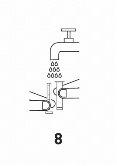
Продолжительность лечения:
- Леветирацетам Тарбис используется как хроническое лечение. Вы должны продолжать лечение Леветирацетамом Тарбис в течение времени, указанного вашим врачом.
- Не прекращайте лечение без рекомендации вашего врача, поскольку это может увеличить ваши приступы. Если ваш врач решит прекратить лечение Леветирацетамом Тарбис, он даст вам инструкции для постепенного отмены Леветирацетама Тарбис.
Если вы приняли больше Леветирацетама Тарбис, чем следует
В случае передозировки или случайного приема проконсультируйтесь с вашим врачом или фармацевтом или позвоните в Токсикологическую информационную службу, телефон: 91 562 04 20, указав лекарство и количество, принятое.
Возможные побочные эффекты передозировки Леветирацетама Тарбис - сонливость, агитация, агрессивность, снижение бдительности,抑ение дыхания и кома.
Свяжитесь с вашим врачом, если вы приняли больше пероральной растворения, чем следует. Ваш врач установит лучшее возможное лечение передозировки.
Если вы забыли принять Леветирацетам Тарбис:
Свяжитесь с вашим врачом, если вы пропустили одну или несколько доз.
Не принимайте двойную дозу, чтобы компенсировать пропущенные дозы.
Если вы прекратили лечение Леветирацетамом Тарбис:
Как и в случае с другими противоэпилептическими лекарствами, прекращение лечения Леветирацетамом Тарбис должно проводиться постепенно, чтобы избежать увеличения приступов.
Если у вас есть какие-либо другие вопросы о использовании этого лекарства, проконсультируйтесь с вашим врачом или фармацевтом.
4. Возможные побочные эффекты
Как и все лекарства, Леветирацетам Тарбис может вызывать побочные эффекты, хотя не все люди испытывают их.
Некоторые из побочных эффектов, таких как сонливость, чувство слабости и головокружение, могут быть более частыми при начале лечения или увеличении дозы. Однако эти побочные эффекты должны уменьшиться со временем.
Сообщите вашему врачу немедленно или обратитесь в службу неотложной помощи ближайшей больницы, если вы испытываете:
- слабость, головокружение или трудности с дыханием, поскольку это может быть признаком тяжелой аллергической реакции (анафилактической).
- отек лица, губ, языка или горла (отек Квинке)
- симптомы гриппа и высыпания на лице, за которыми следует длительная высыпание с повышенной температурой, повышенными уровнями ферментов печени в анализах крови и увеличением количества определенного типа белых кровяных клеток (эозинофилия) и увеличенных лимфатических узлов (реакция гиперчувствительности к лекарству с эозинофилией и системными симптомами (DRESS))
- симптомы, такие как низкий объем мочи, усталость, тошнота, рвота, головокружение и отек ног, рук или ног, поскольку это может быть признаком внезапного снижения функции почек
- высыпание на коже, которое может образовывать пузырьки и выглядеть как небольшие мишени (темные точки в центре, окруженные более светлой областью, с темной полосой вокруг края) (эритема многоформная)
- общее высыпание с пузырьками и отслоением кожи, особенно вокруг рта, носа, глаз и гениталий (синдром Стивенса-Джонсона)
- более тяжелая форма, вызывающая отслоение кожи на более чем 30% поверхности тела (токсический эпидермальный некролиз)
- признаки тяжелых изменений психики или если кто-то рядом с вами заметил признаки спутанности сознания, сонливости (заторможенности), амнезии (потери памяти), ухудшения памяти (пробелов в памяти), аномального поведения или других неврологических симптомов, включая непроизвольные или неконтролируемые движения. Это может быть признаком энцефалопатии.
Частота возможных побочных эффектов, перечисленных ниже, определяется следующим образом:
Очень часто (могут возникать у более 1 из 10 пациентов)
Часто (могут возникать у до 1 из 10 пациентов)
Не часто (могут возникать у до 1 из 100 пациентов)
Редко (могут возникать у до 1 из 1000 пациентов)
Очень редко (могут возникать у менее 1 из 1000 пациентов)
Частота неизвестна (не может быть оценена на основе доступных данных)
Очень часто:
- насофарингит;
- сонливость (чувство сонливости), головная боль.
Часто:
- анорексия (потеря аппетита);
- депрессия, враждебность или агрессивность, тревога, бессонница, нервозность или раздражительность;
- приступы, нарушение равновесия, головокружение (чувство неустойчивости), вялость, тремор (непроизвольное дрожание);
- вертиго (чувство вращения);
- кашель;
- боль в животе, диарея, диспепсия (тяжелое пищеварение, изжога и кислотность), рвота, тошнота;
- высыпание на коже;
- астения/усталость (чувство слабости).
Не часто:
- снижение количества тромбоцитов, снижение количества белых кровяных клеток;
- потеря веса, увеличение веса;
- попытка суицида и мысли о суициде, изменения психики, аномальное поведение, галлюцинации, гнев, спутанность сознания, панические атаки, эмоциональная нестабильность/изменения настроения, агитация;
- амнезия (потеря памяти), ухудшение памяти (пробелы в памяти), нарушение координации/атаксия (нарушение координации движений), парестезия (ползание), нарушения внимания (потеря концентрации);
- диплопия (двойное зрение), размытое зрение;
- анормальные результаты анализов функции печени;
- потеря волос, экзема, зуд;
- слабость мышц, миалгия (боль в мышцах);
- травма.
Редко:
- инфекция;
- снижение всех типов кровяных клеток;
- суицид, изменения личности (проблемы поведения), аномальное мышление (замедленное мышление, трудности с концентрацией);
- непроизвольные мышечные спазмы, поражающие голову, торс и конечности, трудности с контролем движений, гиперкинез (гиперактивность);
- панкреатит (воспаление поджелудочной железы);
- нарушение функции печени, гепатит (воспаление печени);
- высыпание на коже, которое может привести к образованию пузырьков, выглядящих как небольшие мишени (темные точки в центре, окруженные более светлой областью, с темной полосой вокруг края) (эритема многоформная), общее высыпание с пузырьками и отслоением кожи, особенно вокруг рта, носа, глаз и гениталий (синдром Стивенса-Джонсона) и более тяжелая форма, вызывающая отслоение кожи на более чем 30% поверхности тела (токсический эпидермальный некролиз).
- снижение концентрации натрия в крови.
- внезапное снижение функции почек
- рабдомиолиз (разрушение мышечной ткани) и увеличение креатинфосфокиназы в крови, связанное с этим. Распространенность значительно выше у японских пациентов по сравнению с неяпонскими пациентами.
Если вы испытываете побочные эффекты, проконсультируйтесь с вашим врачом или фармацевтом, даже если это побочные эффекты, которые не указаны в этом проспекте.
5. Хранение Леветирацетама Тарбис
Хранить это лекарство в недоступном для детей месте.
Не использовать это лекарство после даты истечения срока годности, указанной на упаковке и флаконе после CAD. Дата истечения срока годности - последний день указанного месяца.
Не использовать после 7 месяцев после открытия упаковки.
Хранить в оригинальной упаковке, чтобы защитить от света. Хранить в вертикальном положении.
Лекарства не должны выбрасываться в канализацию или в мусор. Утилизируйте упаковку и лекарства, которые вам больше не нужны, в пункте SIGRE аптеки. Если у вас есть сомнения, спросите у вашего фармацевта, как утилизировать упаковку и лекарства, которые вам больше не нужны. Таким образом, вы поможете защитить окружающую среду.
6. Содержание упаковки и дополнительная информация
Состав Леветирацетама Тарбис
- Активное вещество - леветирацетам. Каждый мл содержит 100 мг леветирацетама.
- Другие компоненты: глицерол (E422), пропилпарагидроксибензоат (E216), метилпарагидроксибензоат (E218), аммоний глицирризинат, моногидрат цитриновой кислоты, дигидрат цитрата натрия, калиевая соль ацесульфама, мальтитол (E965), ароматизатор грейпфрута и очищенная вода.
Внешний вид продукта и содержание упаковки
Леветирацетам Тарбис 100 мг/мл раствор для орального применения - прозрачная бесцветная жидкость.
Леветирацетам Тарбис упаковывается в стеклянные флаконы объемом 300 мл или 150 мл, помещенные в картонную упаковку:
Флакон из коричневого стекла объемом 150 мл с детским защитным крышком, kèmющийся с градуированной оральной шприцем объемом 1 мл и адаптером для шприца. Эта упаковкаподходит для грудных детей от 1 месяца до 6 месяцев.
Флакон из коричневого стекла объемом 150 мл с детским защитным крышком, kèmющийся с градуированной оральной шприцем объемом 3 мл и адаптером для шприца. Эта упаковкаподходит для грудных детей и маленьких детей от 6 месяцев до 4 лет.
Флакон из коричневого стекла объемом 300 мл с детским защитным крышком, kèmющийся с градуированной оральной шприцем объемом 10 мл и адаптером для шприца. Эта упаковкаподходит для детей от 4 лет, подростков и взрослых.
Возможно, что будут продаваться только некоторые размеры упаковок.
Владелец разрешения на маркетинг и ответственный за производство
Владелец разрешения на маркетинг
Tarbis Farma, S.L.
Gran Vía Carlos III, 94
08028 Барселона
Испания
Ответственный за производство
Bluepharma Indústria Farmacêutica, S.A.
Cimo de Fala – S. Martinho do Bispo
3045-016 Коимбра
Португалия
Дата последнего обновления этой инструкции: Май 2017.
Подробная и актуальная информация о этом лекарстве доступна на сайте Испанского агентства по лекарствам и медицинским изделиям (AEMPS) http://www.aemps.gob.es/

Сколько стоит ЛЕВЕТИРАЦЕТАМ ТАРБИС 100 мг/мл ОРАЛЬНЫЙ РАСТВОР в Испании в 2025 году?
Средняя цена на ЛЕВЕТИРАЦЕТАМ ТАРБИС 100 мг/мл ОРАЛЬНЫЙ РАСТВОР в декабрь, 2025 года составляет около 56.64 евро. Финальная стоимость может зависеть от региона, конкретной аптеки и рецептурного статуса. Для точной информации лучше проверить онлайн или в ближайшей аптеке.
- Страна регистрации
- Средняя цена в аптеках56.64 EUR
- Активное вещество
- Требуется рецептДа
- Производитель
- Информация носит справочный характер и не является медицинской рекомендацией. Перед приемом любых препаратов проконсультируйтесь с врачом. Oladoctor не несет ответственности за медицинские решения, принятые на основе этого контента.
- Аналоги ЛЕВЕТИРАЦЕТАМ ТАРБИС 100 мг/мл ОРАЛЬНЫЙ РАСТВОРФорма выпуска: ИНЪЕКЦИОННЫЙ РАСТВОР ДЛЯ ИНФУЗИЙ, 100 мгАктивное вещество: ЛеветирацетамПроизводитель: Ucb PharmaТребуется рецептФорма выпуска: ИНЪЕКЦИОННЫЙ РАСТВОР ДЛЯ ИНФУЗИЙ, 100 мг/млАктивное вещество: ЛеветирацетамПроизводитель: Ucb PharmaТребуется рецептФорма выпуска: ОРАЛЬНЫЙ РАСТВОР/СУСПЕНЗИЯ, 100 мгАктивное вещество: ЛеветирацетамПроизводитель: Ucb PharmaТребуется рецепт
Аналоги ЛЕВЕТИРАЦЕТАМ ТАРБИС 100 мг/мл ОРАЛЬНЫЙ РАСТВОР в других странах
Лучшие аналоги с тем же действующим веществом и терапевтическим эффектом.
Аналог ЛЕВЕТИРАЦЕТАМ ТАРБИС 100 мг/мл ОРАЛЬНЫЙ РАСТВОР в Polónia
Аналог ЛЕВЕТИРАЦЕТАМ ТАРБИС 100 мг/мл ОРАЛЬНЫЙ РАСТВОР в Ukraine
Врачи онлайн по ЛЕВЕТИРАЦЕТАМ ТАРБИС 100 мг/мл ОРАЛЬНЫЙ РАСТВОР
Консультация по дозировке, побочным эффектам, взаимодействиям, противопоказаниям и продлению рецепта на ЛЕВЕТИРАЦЕТАМ ТАРБИС 100 мг/мл ОРАЛЬНЫЙ РАСТВОР – по решению врача и с учетом местных правил.







